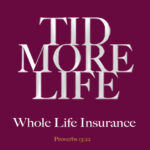What is the Cash Value of a $10,000 Life Insurance Policy? Complete Breakdown
Many people purchase small whole life insurance policies with $10,000 in death benefits for final expense coverage or as starter policies. If you own such a policy or are considering one, understanding its cash value component is essential. This guide explains how cash value works in a $10,000 policy and what you can realistically expect to accumulate over time.
Do All $10,000 Life Insurance Policies Have Cash Value?
First, it’s important to understand that not all life insurance policies build cash value:
- Term life insurance policies: These $10,000 policies have no cash value component. They provide pure death benefit protection for a specific period (10, 20, 30 years) but don’t accumulate any cash value you can access.
- Permanent life insurance policies: These include whole life, universal life, and variable life insurance. Only these policy types build cash value over time.
If you have a $10,000 term life policy, the answer to “what is the cash value?” is simple: zero. The rest of this article focuses on permanent policies.
Cash Value Growth in a $10,000 Whole Life Policy
For a standard $10,000 whole life policy, here’s how cash value typically accumulates:
Early Years (Years 1-5)
During the initial years, cash value growth is minimal due to front-loaded expenses:
- Year 1: $0-$50 (0-0.5% of face value)
- Year 2: $50-$150 (0.5-1.5% of face value)
- Year 3: $150-$300 (1.5-3% of face value)
- Year 4: $300-$450 (3-4.5% of face value)
- Year 5: $450-$600 (4.5-6% of face value)
Mid-Term Years (Years 10-20)
Cash value growth accelerates during this period:
- Year 10: $1,000-$1,800 (10-18% of face value)
- Year 15: $2,000-$3,000 (20-30% of face value)
- Year 20: $3,000-$4,200 (30-42% of face value)
Mature Policy (Years 30+)
A $10,000 whole life policy eventually builds substantial cash value relative to its face amount:
- Year 30: $5,000-$6,500 (50-65% of face value)
- Year 40: $7,000-$8,500 (70-85% of face value)
- Year 50+: $8,500-$9,500 (85-95% of face value)
Factors Affecting Cash Value in a $10,000 Policy
Several variables impact how quickly your specific policy builds cash value:
1. Age at Purchase
- Younger policyholders (20s-40s): Faster cash value accumulation relative to premiums paid
- Older policyholders (50s-70s): Slower cash value growth due to higher mortality costs
2. Policy Type
Different permanent policies build cash value differently:
- Whole Life: Guaranteed, steady growth with potential dividends
- Universal Life: Variable growth based on interest rates, potentially lower than whole life in low-interest environments
- Indexed Universal Life: Growth tied to market indices, potentially higher but less predictable
3. Company Dividend Performance
For participating whole life policies, dividends significantly impact cash value:
- High-performing mutual companies: May add 1-2% additional cash value growth annually
- Average-performing companies: More modest dividend additions
4. Payment Structure
- Single premium: Immediate substantial cash value
- Limited pay (10-pay, 20-pay): Faster cash value growth
- Lifetime pay: Slower initial cash value accumulation
Accessing the Cash Value in a $10,000 Policy
Once your policy has accumulated cash value, you have several options to access it:
- Policy loans: Borrow against the cash value (typically at 5-8% interest)
- Partial withdrawals: Remove a portion of the cash value (reduces death benefit)
- Policy surrender: Cancel the policy and take the entire cash value (terminates coverage)
- Reduced paid-up insurance: Convert to a smaller, fully paid policy
Real-World Example: Typical $10,000 Whole Life Policy
For a 40-year-old non-smoking male purchasing a $10,000 whole life policy with a premium of approximately $25 monthly:
- Premium over 30 years: $9,000 ($25 × 12 × 30)
- Guaranteed cash value at year 30: Approximately $5,500
- Projected cash value with dividends at year 30: Approximately $6,500
Conclusion: Is the Cash Value Worth It?
A $10,000 life insurance policy will generally build cash value slowly in the early years, accelerating as the policy matures. After 20-30 years, you can expect the cash value to represent roughly 30-65% of the death benefit.
For those primarily seeking life insurance protection, the modest cash value in a $10,000 policy may be a secondary consideration. However, if cash value growth is your primary goal, larger policies or alternative investment vehicles may provide better returns.
Before purchasing, request a policy illustration that shows guaranteed and projected cash values for the specific $10,000 policy you’re considering. This will help you make an informed decision based on actual numbers rather than industry averages.
